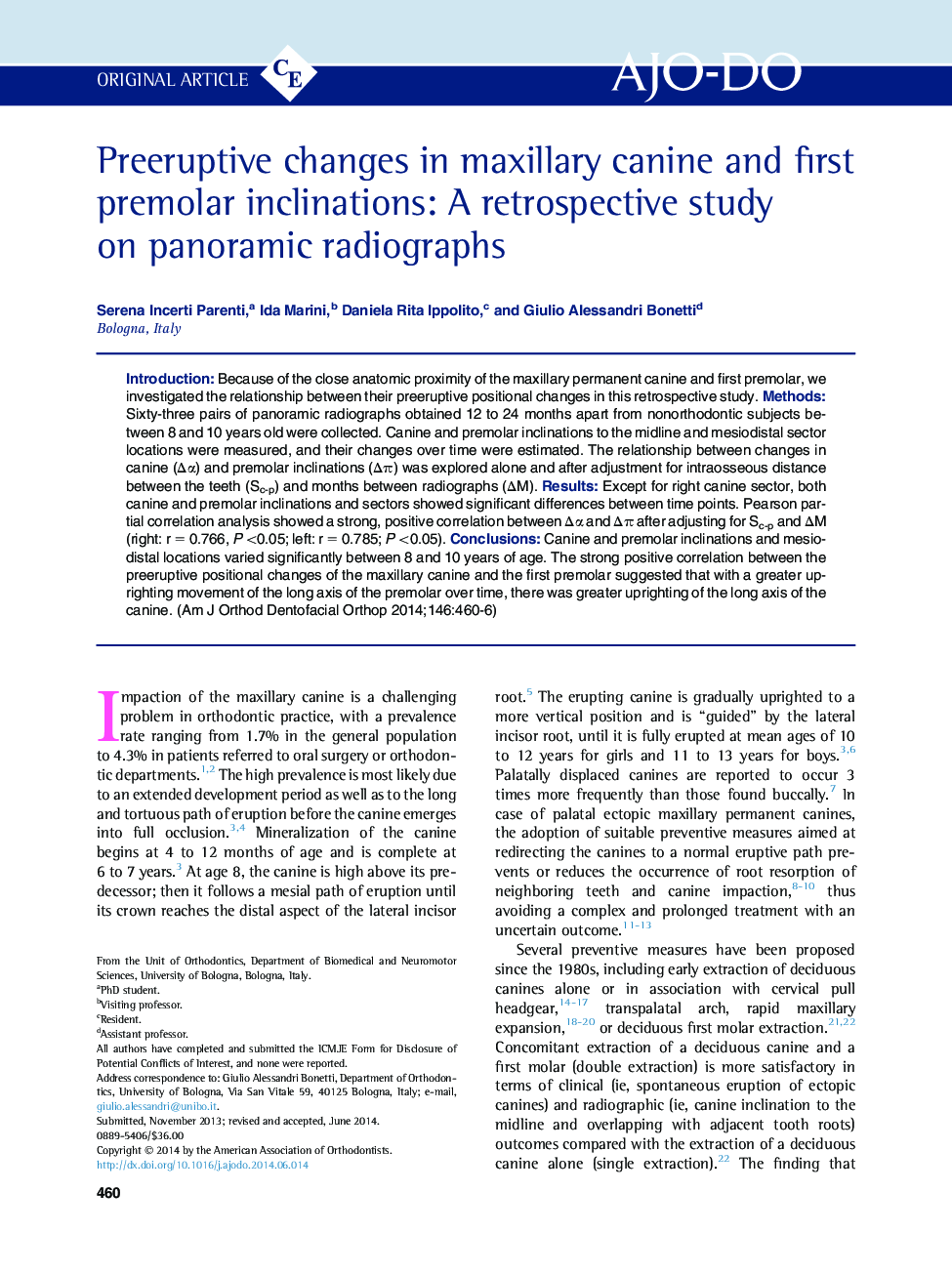| Article ID | Journal | Published Year | Pages | File Type |
|---|---|---|---|---|
| 3116308 | American Journal of Orthodontics and Dentofacial Orthopedics | 2014 | 7 Pages |
•Canine inclination varied significantly between 8 and 10 years of age.•Premolar inclination and mesiodistal location varied significantly between 8 and 10 years of age.•There is a strong correlation between changes in canine and premolar inclinations.•The more the premolar uprighted over time, the more the canine straightened.
IntroductionBecause of the close anatomic proximity of the maxillary permanent canine and first premolar, we investigated the relationship between their preeruptive positional changes in this retrospective study.MethodsSixty-three pairs of panoramic radiographs obtained 12 to 24 months apart from nonorthodontic subjects between 8 and 10 years old were collected. Canine and premolar inclinations to the midline and mesiodistal sector locations were measured, and their changes over time were estimated. The relationship between changes in canine (Δα) and premolar inclinations (Δπ) was explored alone and after adjustment for intraosseous distance between the teeth (Sc-p) and months between radiographs (ΔM).ResultsExcept for right canine sector, both canine and premolar inclinations and sectors showed significant differences between time points. Pearson partial correlation analysis showed a strong, positive correlation between Δα and Δπ after adjusting for Sc-p and ΔM (right: r = 0.766, P <0.05; left: r = 0.785; P <0.05).ConclusionsCanine and premolar inclinations and mesiodistal locations varied significantly between 8 and 10 years of age. The strong positive correlation between the preeruptive positional changes of the maxillary canine and the first premolar suggested that with a greater uprighting movement of the long axis of the premolar over time, there was greater uprighting of the long axis of the canine.
